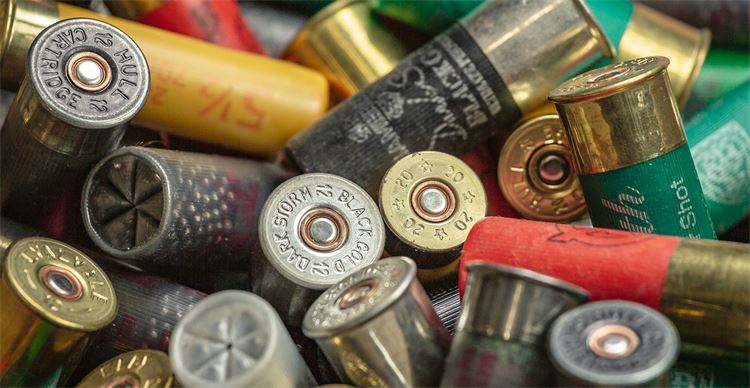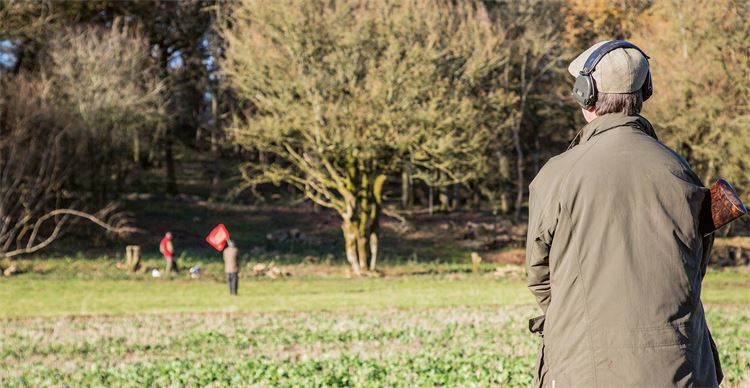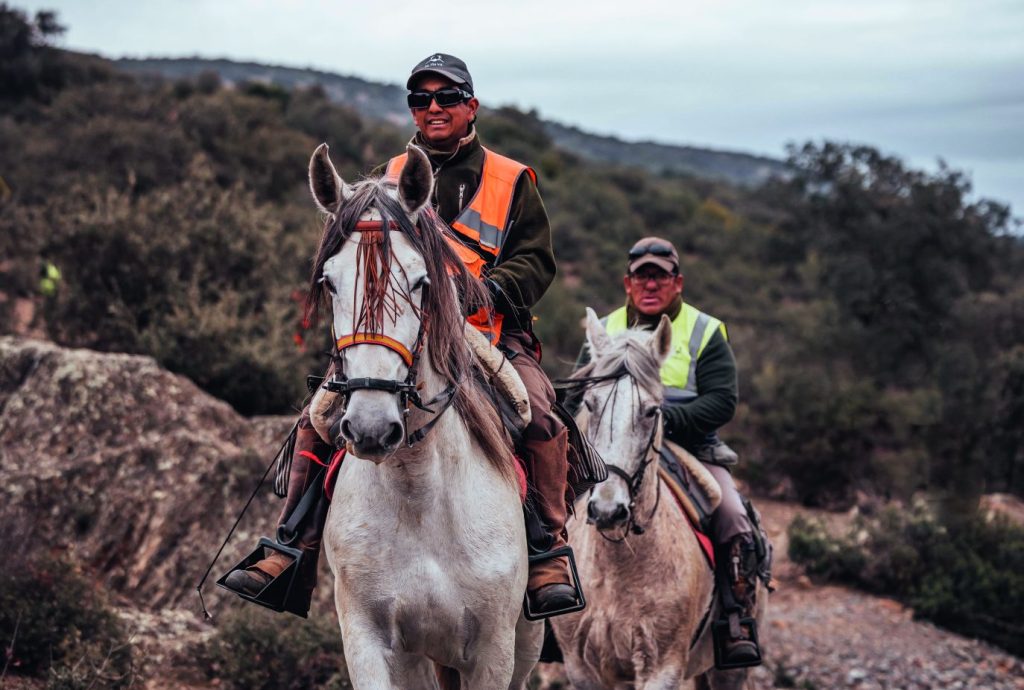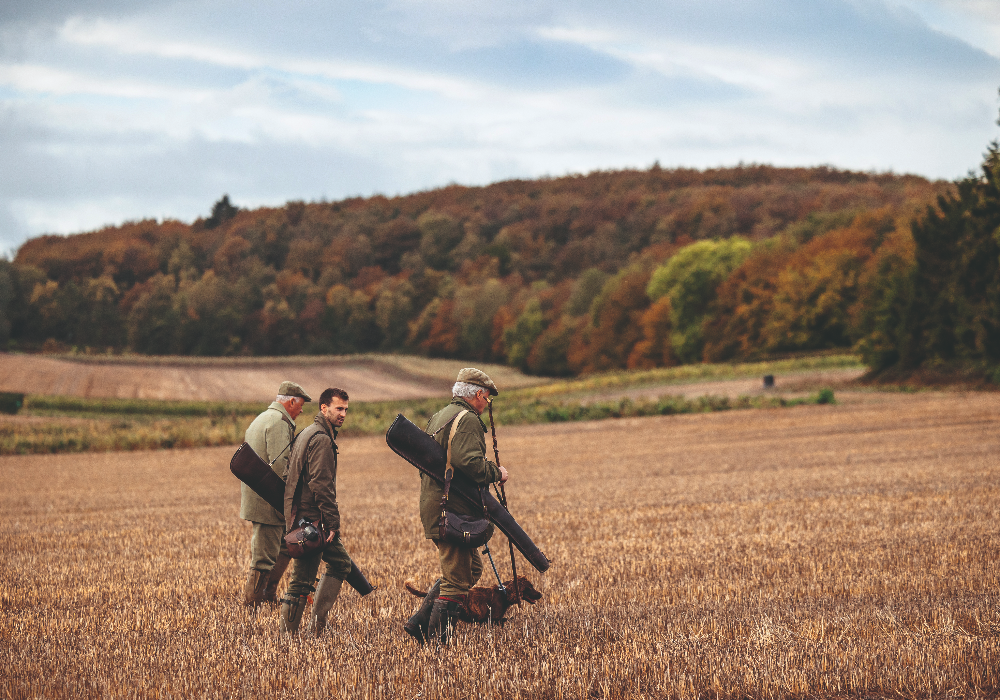First and foremost
Simon Ward explains how we should never take safety for granted when shooting and how to prep for this.
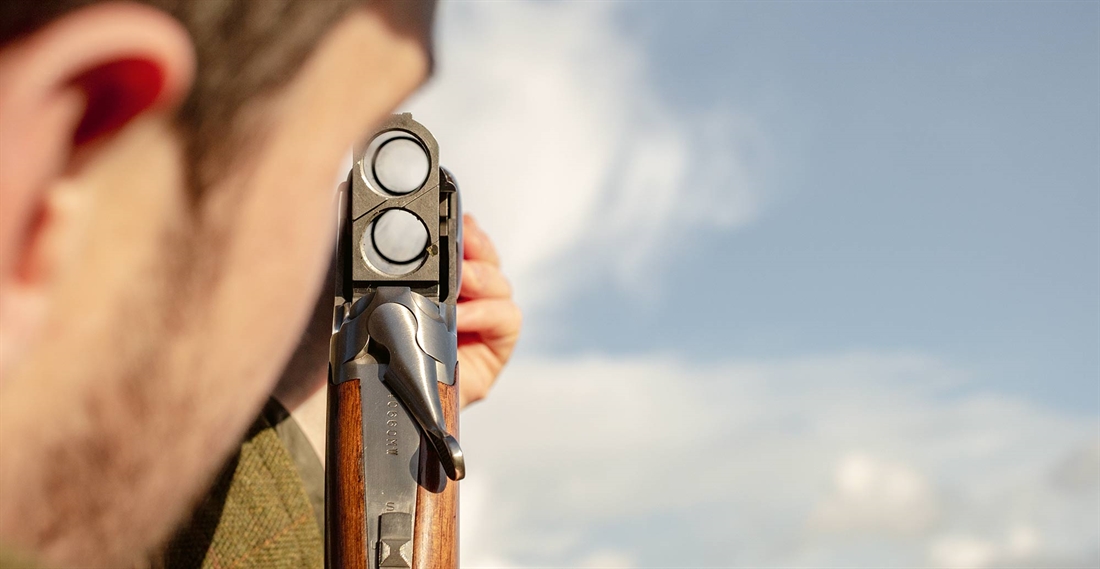
When handling a gun, in any scenario or environment, it is our responsibility and of utmost importance to be safe. Yes, we all want to better our shooting and take it to the next level, but we must never take safety in the field for granted or forget that, if handled incorrectly, a shotgun is potentially lethal.
From checking that your gun is suitable for the task at hand right up until it has been cleaned and put back in the cabinet, ‘being safe’ is the number one priority. Get into the habit of double checking, using common sense, and never taking shortcuts. It sounds obvious, but if everyone did it, I would never have felt the need to write this article.
Before we get into the nitty gritty, please don’t assume this article is aimed at just the novice Shot, it is a reminder to us all. Over the years I have witnessed even the most experienced Guns and loaders becoming complacent. Safety when shooting is all about being vigilant, meticulous, and expecting the unexpected.
Are your guns serviced regularly?
Before every season, I would highly recommend you have your guns serviced. Like an MOT, this not only ensures that your gun will work when you next go shooting, but that you have the confidence it is safe to use, too.
Before the shoot day
Every time you go to get the gun out of the cabinet, the first thing you should do is check the safety catch is on. Then you should open the gun to check that the chambers are empty, and look down the bores against a solid background to make sure there are no obstructions. If you have multi-chokes, check they are tight and flush, and if you can, check that the stock bolt is tight to prevent the stock cracking under use. Never take a gun straight out of the cabinet, put it into a slip and drive to the shoot, even if you are sure you put it away empty.
Always treat your gun as loaded at all times whether it is or not. Never point your gun in a dangerous direction.
If you plan to transport the gun in a case, do these checks before disassembling it to put in the case, and check again before assembling and getting onto the gunbus. All of these safety checks should become second nature.
Cartridges
It is crucial that you keep cartridges of different gauges separate. Mistakes can and do happen; say a father and son were sharing a peg using a 12 bore and a 20 bore and loading for each other. One leaves the smaller cartridges in his pocket and during a busy drive accidentally drops a 20 into the 12 bore chamber. The gun clicks just like a misfire and neither think to check for a smaller cartridge in the barrels on ejection. A 12 is then dropped in on top – the result of the next shot is catastrophic. The same applies with mixing 20 and 28 bore ammunition.
It is also important that you check the length of your gun’s chambers and the maximum load that the gun is proofed for – you should never exceed this. You can look at the flat of the barrels to find a stamp, or ask a reputable gunsmith to confirm this for you. Whilst it is okay to use a cartridge shorter and lighter than proof, it should not be chanced the other way around. For example, it’s likely that an old English gun has a chamber length of 2½”, and firing a 2¾” cartridge can lead to the chamber or barrels splitting under fire as the cartridge is unable to open fully. This can be very dangerous.
Have you also checked that your guns are suitable for non-toxic loads? If you are shooting ducks on a driven day or have a wildfowling trip planned, it is a legal requirement to use lead alternatives. Many guns are not suitable for them, so you must check that your guns are proofed for steel or any other non-toxic shot. I’d recommend asking a gunsmith beforehand.
It is good to get in the habit of keeping just one size/type of cartridge in your bag, and never assume that when someone hands you a few cartridges to try they are suitable for your gun.
Listen to the briefing
Not only is it very disrespectful to ignore the morning briefing on a shoot day, but important areas of caution are often highlighted at this point, such as where public rights of way may be in relation to the drive, and what the format of the day is going be – how will you be pegged, for example, or will there be a walking Gun? Knowing the ins and outs of the day helps to reduce miscommunication and in turn lowers the chances of any mistakes being made.
Pre-drive
It’s time to get on the gunbus, everyone is excited and rushing around. Don’t just take the gun out of the car and stow it on the bus without checking again that the chambers are empty and the barrels are clear. For peace of mind alone, it is worth doing.
Carry your gun in its slip when walking to the pegs. When you arrive at your peg, familiarise yourself with where the other Guns, beaters, flankers, dog handlers etc. are going to be, and establish your safe angles of fire.
Check that you have stable footing as you should never take a shot off balance. These variables will differ from quarry to quarry, shoot to shoot, drive to drive.
Similar to when you put the gun away in its slip, it should be broken so that you can see both chambers as you take it from the slip, always keeping the muzzles pointing to the ground. With the gun still open, raise the muzzles to the sky and check again that the barrels are completely clear. Zip up the slip fully so that no debris can enter it. Repeat this process before every drive.
As you wait for the drive to get underway, keep the gun broken and resting over the crook of your arm. Never rest the barrels on your foot, despite the gun being broken – loaded or not. This is a very bad habit – you can actually plug the barrels with mud or snow which may have kicked up onto your boot.
During the drive
When the birds start to appear in the distance, take the gun from the crook of your arm and close the action by lifting the stock, keeping the barrels pointed at the floor. Wait with the barrels pointing to the sky and the stock resting firmly against your hip, keeping your fingers well away from the trigger – as an added bonus, holding a gun in this position is not only safe, but facilitates a smoother gun mount.
Never cradle the gun between your arms as this often inadvertently points the barrels along the line. And never rest the barrels of a closed gun over your shoulder – how can you possibly know what or who it may be pointing at behind you?
As a general rule for addressing a driven pheasant or partridge, you should never take a shot at one that hasn’t got plenty of sky around it, whether in front, to the side, or behind you.
With regards to releasing the safety catch, you should only do so when your gun is pointing in a safe direction towards your chosen bird, keeping your trigger finger away from the trigger. Make sure you allow yourself to take a split second to close your grip fully before taking the shot, too; on numerous occasions I’ve seen people pulling the trigger whilst the thumb is still on top of the safety catch and the recoil has sent the top-lever into their thumb, splitting it open – very painful!
It is important to bear in mind that whilst most game guns are fitted with auto safety catches which slide back to ‘safe’ when the top lever is pushed across and the gun is opened, an increasing number of guns are finding their way into the game shooting field which do not have this feature. If using a manual safety catch, you must manually slide it back on before ejecting cartridges and reloading.
Double gunning
It is likely that your loader will want to carry your guns and check the barrels and chambers for you. But never assume, and ask to check the barrels of both guns before they put cartridges in at the start of the drive – you wouldn’t pull out of a junction on the word of someone else, and handling a gun is no different. When shooting grouse from butts, don’t be afraid to put the safety sticks in yourself, either, or at least double
check they are positioned properly – two pairs of eyes, after all, are better than one. Safety first!
It is vital when double gunning to slide the safety catch back to safe before you hand the gun back to your loader every time, regardless of whether you have taken one shot or two or if you can see more birds coming.
Misfires and abnormal sounds
If you take a shot and it doesn’t sound right – the report might be a dull, muffled sound – be prudent and immediately unload your gun and check both barrels for blockages. It is likely you will find a wad stuck in the barrels which must be removed before you commence shooting again. The consequences of ignoring this could be fatal. I’ve had this happen in my own guns on three occasions in over 30 years of shooting, and I’ve seen it happen many more times. If you hear the same dull report from a neighbour’s gun, shout over to them immediately as they might not be familiar with the sound.
To remove a wad, or any other obstruction, use a cleaning rod and push it back out in the direction from which it came; pushing it the other way will only pack it in more tightly. Never fire a cartridge on top of an obstruction of any kind to clear it, whatever it is!
Post drive
The drive has come to an end, you have marked your birds and want to help the pickers-up ensure everything is accounted for. But take your time to ensure your gun is safely put away properly as rushing is when mistakes are made. Unload your gun, making sure that the safety catch is on if you have a manual catch, and double check your gun is unloaded before sleeving. Fasten the slip and leave it in a safe and obvious place, then tidy up your cartridges. If you are not going far and there is no chance of public access, you can leave your kit on the peg, otherwise carry your gun in its sleeve over your shoulder whilst helping the pickers-up.
Eye protection
As a Gun, loader or flanker, I would recommend you always wear safety glasses, especially when on a grouse moor. Stray pellets are not uncommon, and ricochets are quite possible. It is important to remember that whilst the effective range of a shotgun is around 50 yards, a pellet still has the energy to travel out to 250 yards.
Different environments
The same rules and precautions apply to clay shooting, rough shooting, pigeon decoying, wildfowling and other scenarios. When walked-up shooting, hold the gun resting on your hip or grip it firmly in both hands keeping the muzzels pointing skyward at all times. If you are going over any obstacle, such as a stile or fence, take the cartridges out of the chambers and hand your unloaded gun to another person (making it clear that the barrels are empty) whilst you cross it. Then you can take the gun back and offer to do the same for your fellow Gun.
When pigeon shooting you must always be cautious when leaving the hide. Break the gun, remove the cartridges and lay it in a secure position regardless of how quick you are likely to be. Never leave it loaded and leaning against the hide poles – a gust of wind is enough to knock it over and could discharge the gun.
For other scenarios, particularly with foreshore wildfowling, regular checks for mud, snow and other substances plugging the barrel-ends is of great importance.
Above all, remember there is no middle ground between a Gun that is safe and one that is not.
Top Shooting grounds
As selected by Fieldsports Magazine.
West London Shooting School
The home of shooting tuition, 12 miles from the centre of London. Unrivalled for their lessons, courses and corporate events.
Sharvel Lane, West End Road, Northolt, Middlesex, UB5 6RA
Contact Chris Da Camara chris@shootingschool.co.uk
020 8845 1377 /
Lady’s Wood Shooting School
One of the UK’s finest game shooting schools. Ideal for tuition, practice, corporate hospitality, recently upgraded 120ft high tower, grouse butt, gun sales, clothing and accessories.
Mapleridge Lane, Horton, Chipping Sodbury, Glos, BS37 6PW
01454 294546 / shoot@ladyswood.co.uk
Ian Coley Shooting School
Practice & Tuition Monday – Saturday. Specialist game and clay shooting tuition. 3 full-time APSI qualified gun fitters. Award winning Shooting Ground perfect for corporate hospitality.
Nr. Andoversford, Cheltenham, Glos, GL54 4AX
01242 870391 / shootingschool@iancoley.co.uk
Bywell Shooting Ground
The North East’s only CPSA Premier Plus rated shooting ground with a fully stocked gun room, lessons, practice and expert advice. Shop open hours: Tues – Sat 9:30 – 5:30
Bywell Farm, Felton, Northumberland, NE65 9QQ
01670 787 827 / info@bywellshootingground.co.uk
https://www.bywellshootingground.co.uk/
The Royal Berkshire Shooting School
Established over two decades ago, the shooting school employs eight full-time professional instructors, and has a reputation for innovation and forward thinking.
Hook End Lane, Pangbourne, Berks, RG8 8SD
E. J. Churchill
An award-winning clay pigeon shooting ground set amidst 40 acres of woodland on the stunning West Wycombe estate in Buckinghamshire.
Park Lane, Lane End, High Wycombe, Bucks, HP14 3NS
BISLEY Shooting Ground
Just 30 miles from central London, located within 3,000 acres of Surrey heath and woodland. Founded in 1895.
Bisley Camp, Brookwood, Surrey, GU24 0NY
Holland & Holland’s Shooting Grounds
Offering unrivalled facilities for the sporting gun, set in 60 acres of rolling woodland and open countryside, just 17 miles from Central London.
Ducks Hill Road, Northwood, Middlesex, HA6 2ST
Related Articles
Get the latest news delivered direct to your door
Subscribe to Fieldsports Journal
Elevate your experience in the field with a subscription to Fieldsports Journal, the premium publication for passionate country sports enthusiasts. This bi-monthly journal delivers unparalleled coverage of game shooting, fishing and big game across the UK and beyond.
Each issue offers a stunning collection of in-depth features, expert opinions and world-class photography, all presented in a timeless yet contemporary design.
Save 10% on shop price when you subscribe, with a choice of packages that work for you. Choose from Print & Digital or Digital only with each journal delivered directly to your door or via the app every other month, plus access to past issues with the digital back issue library.






